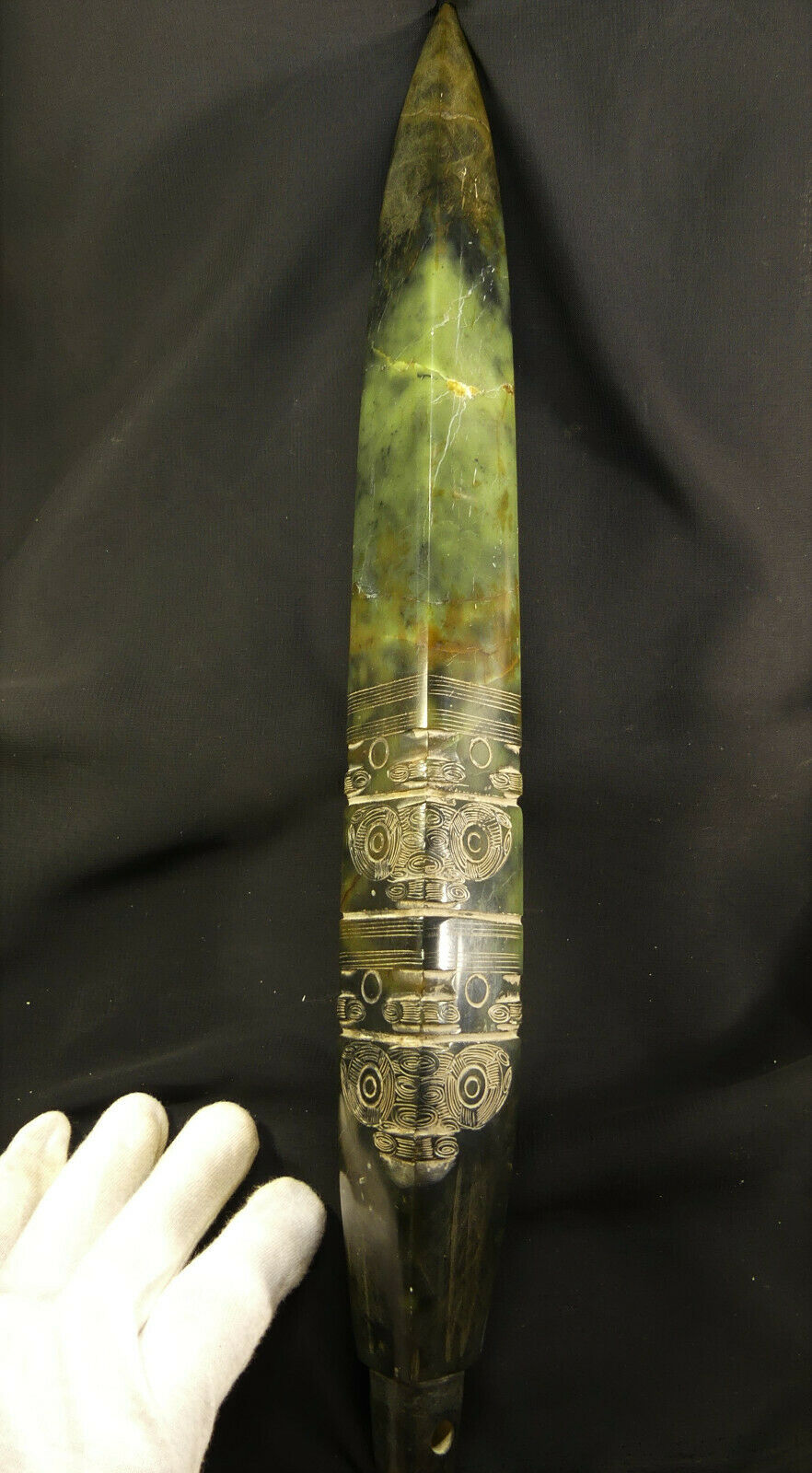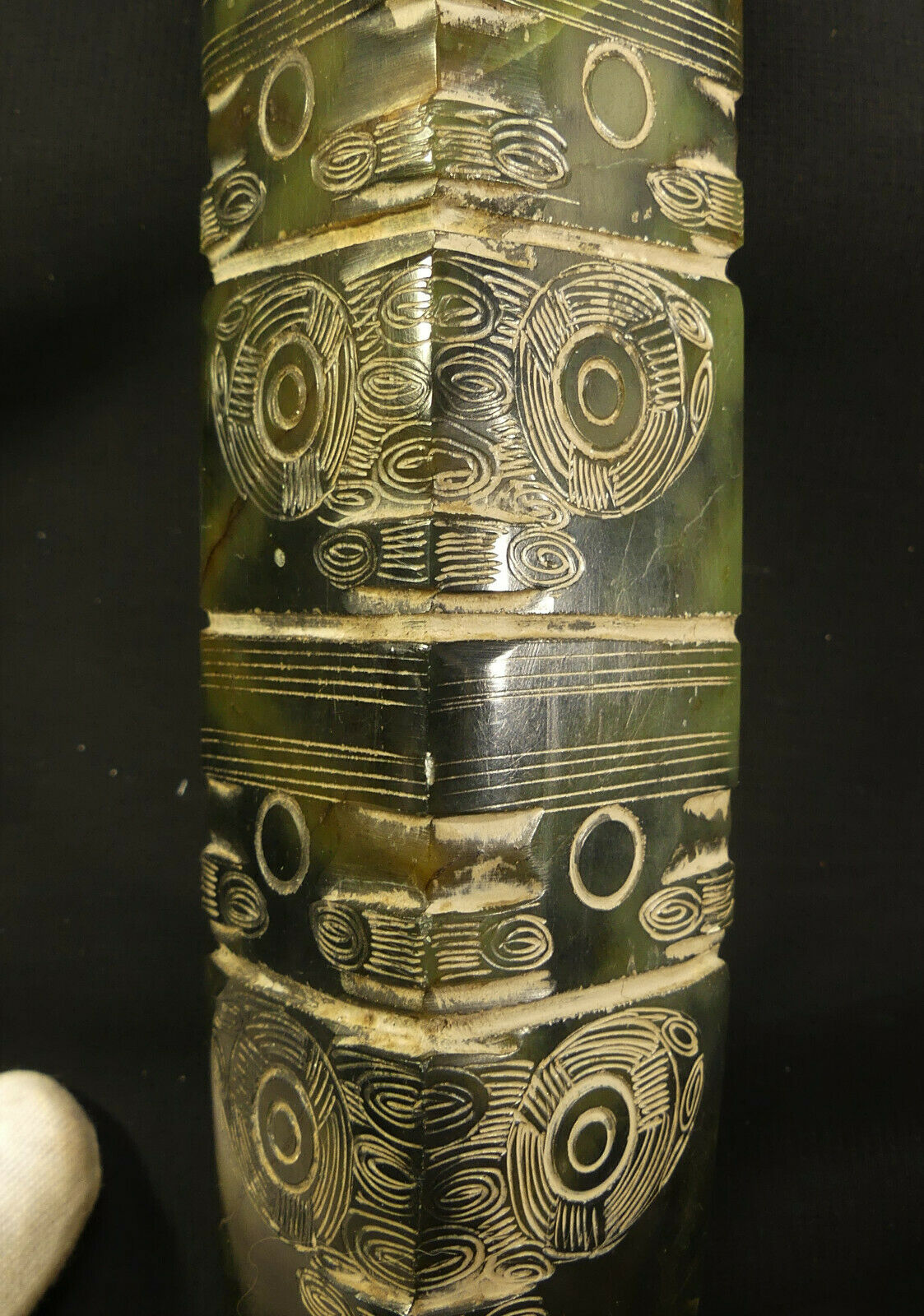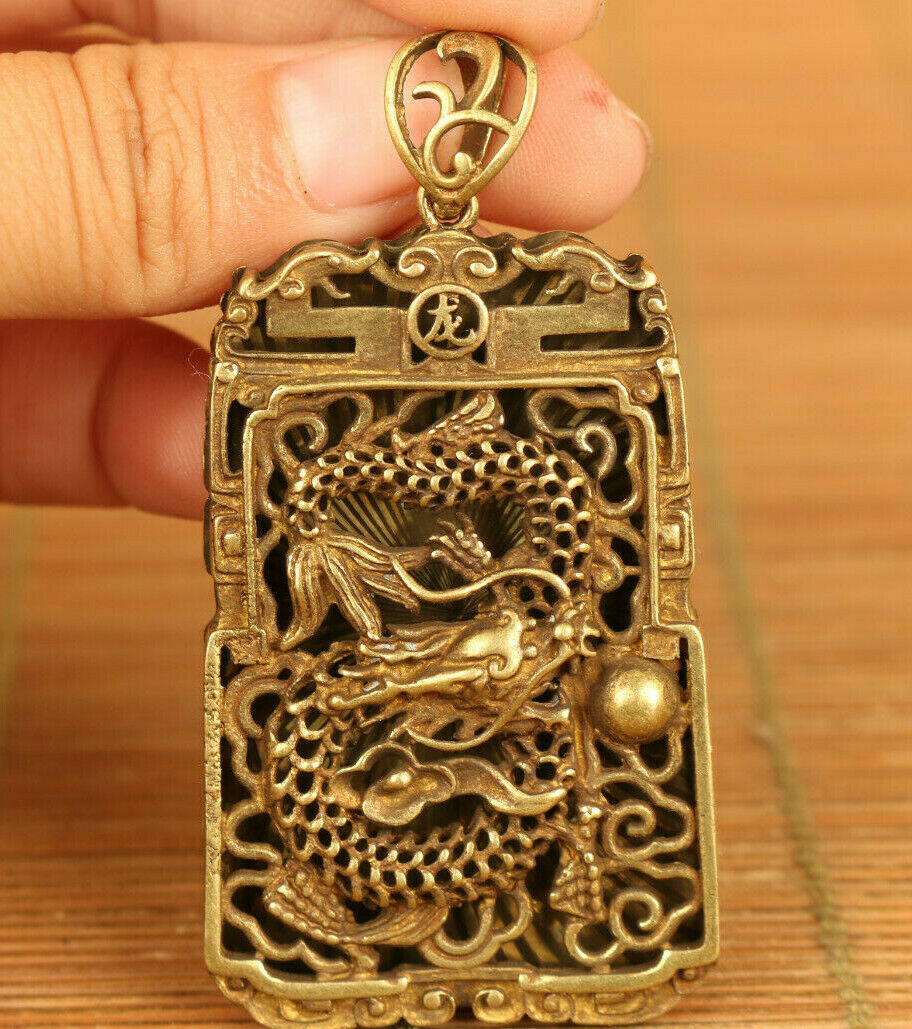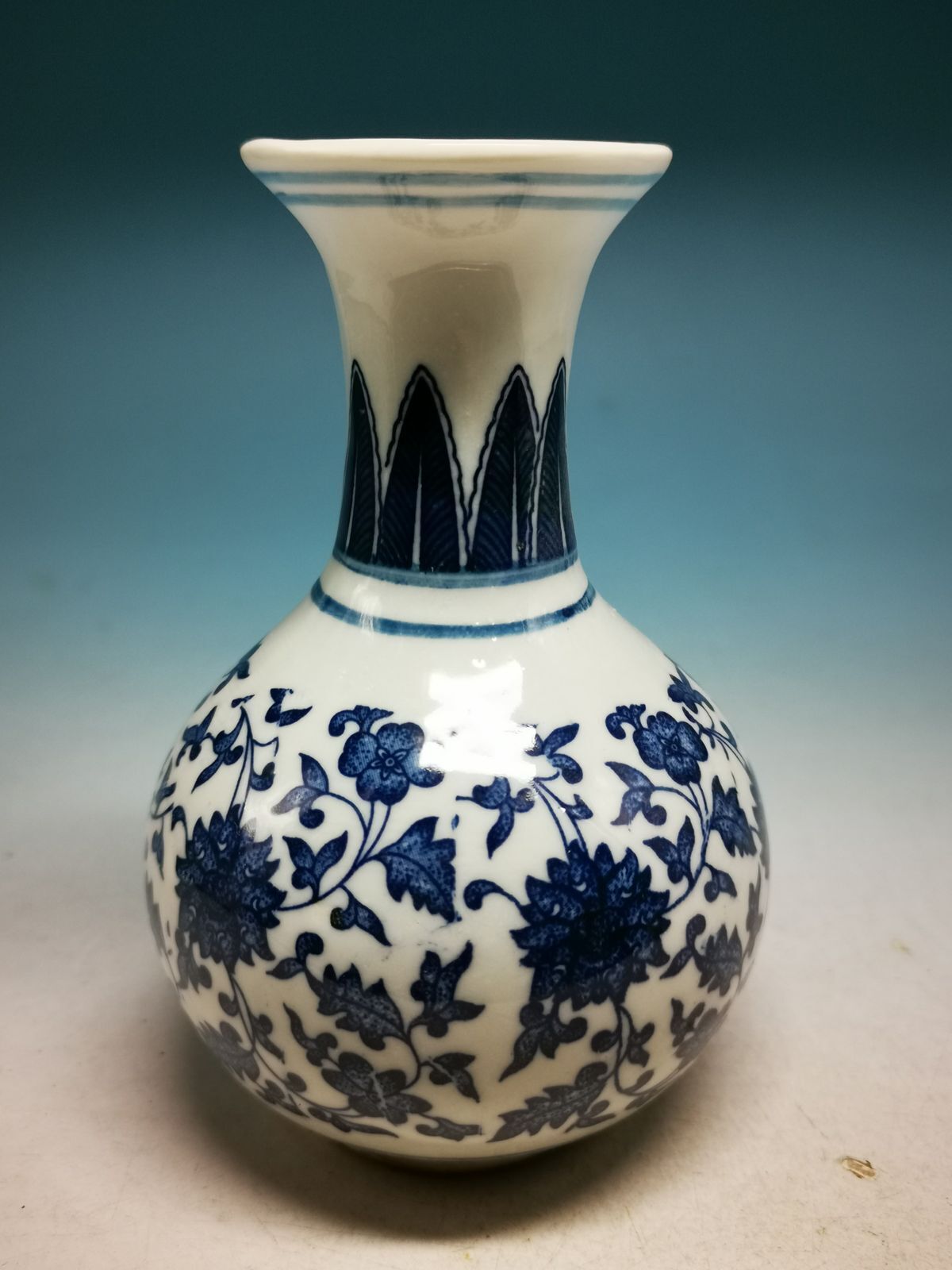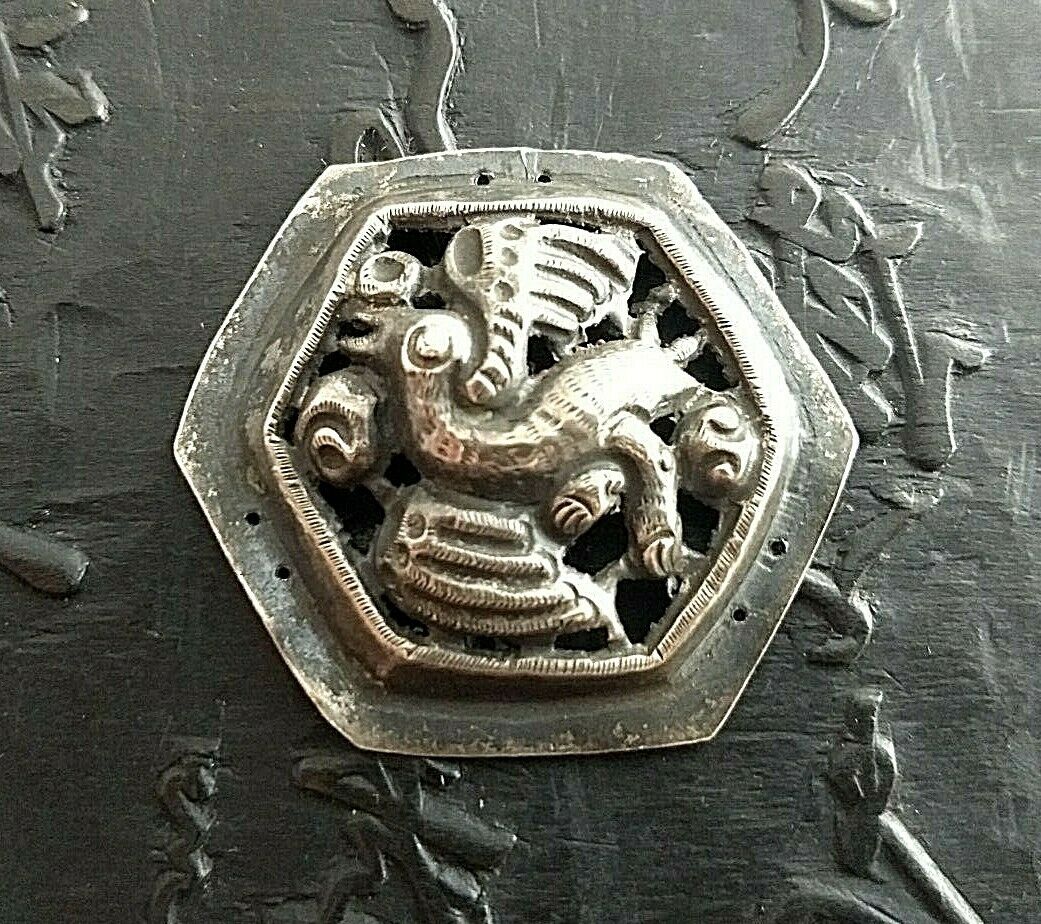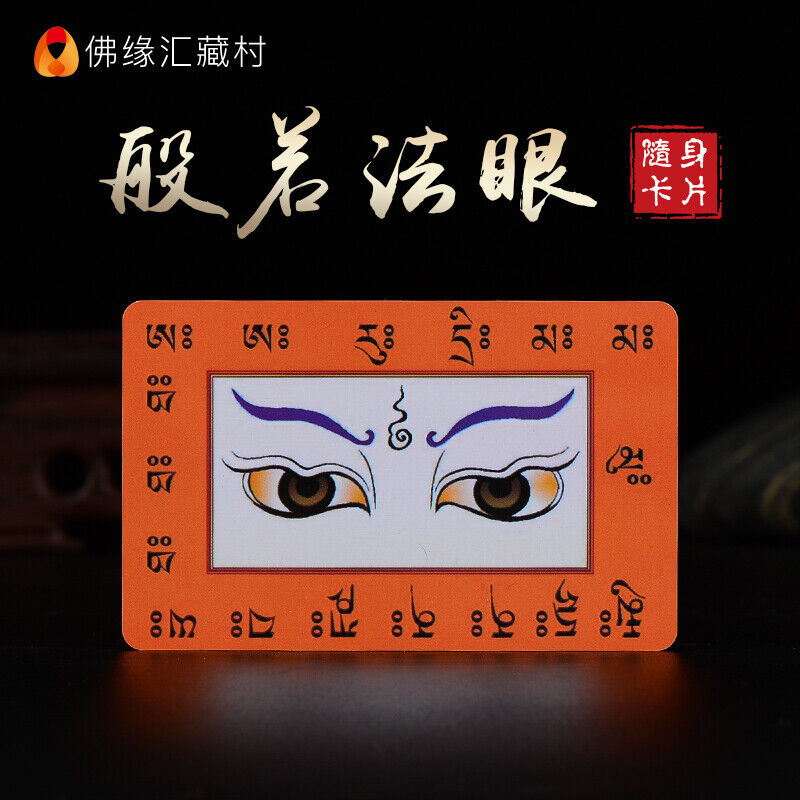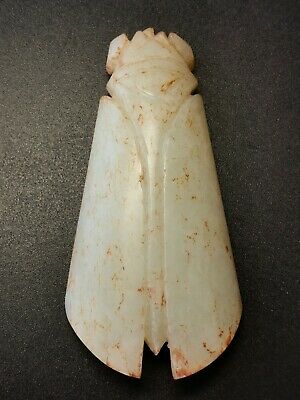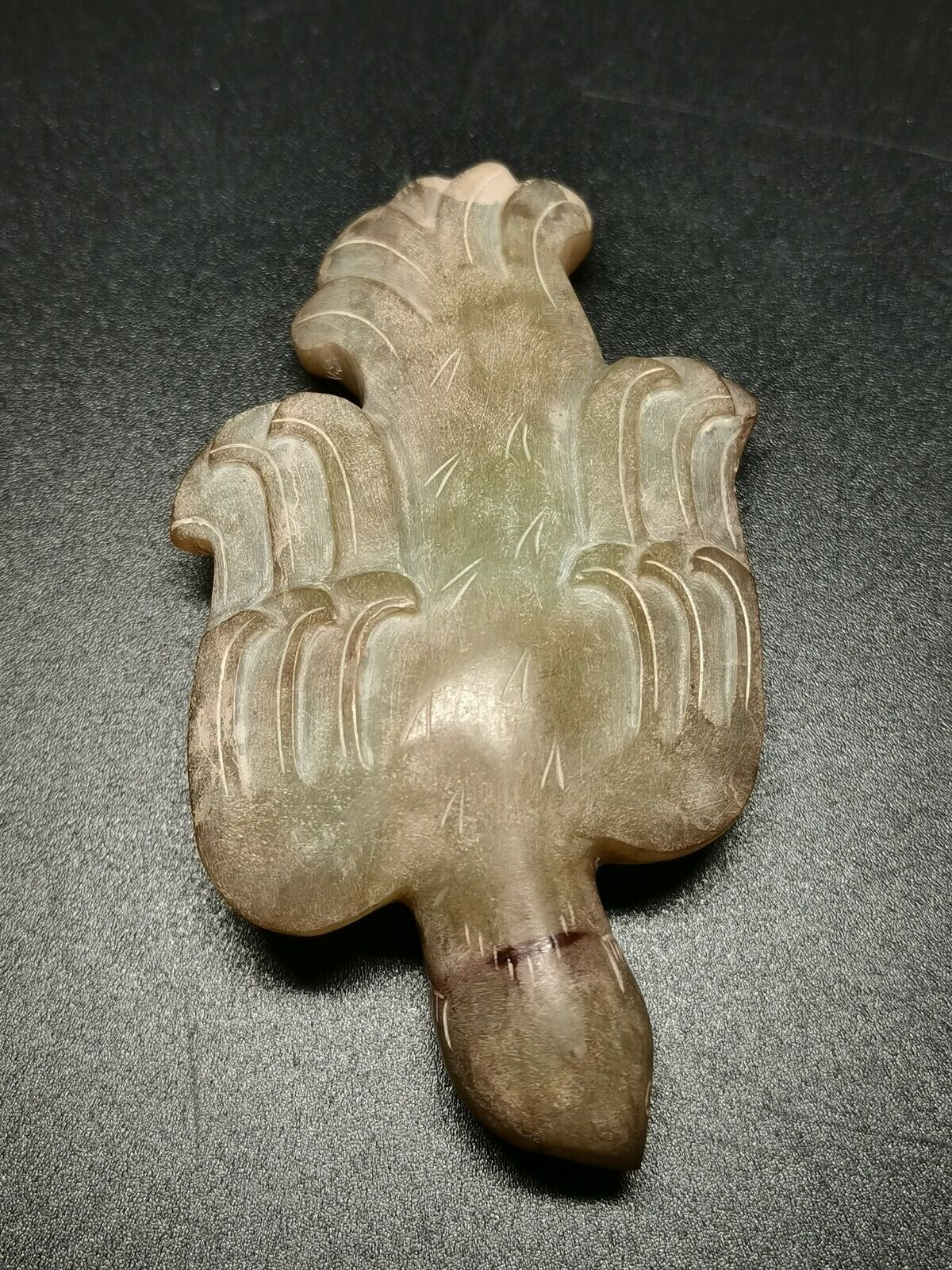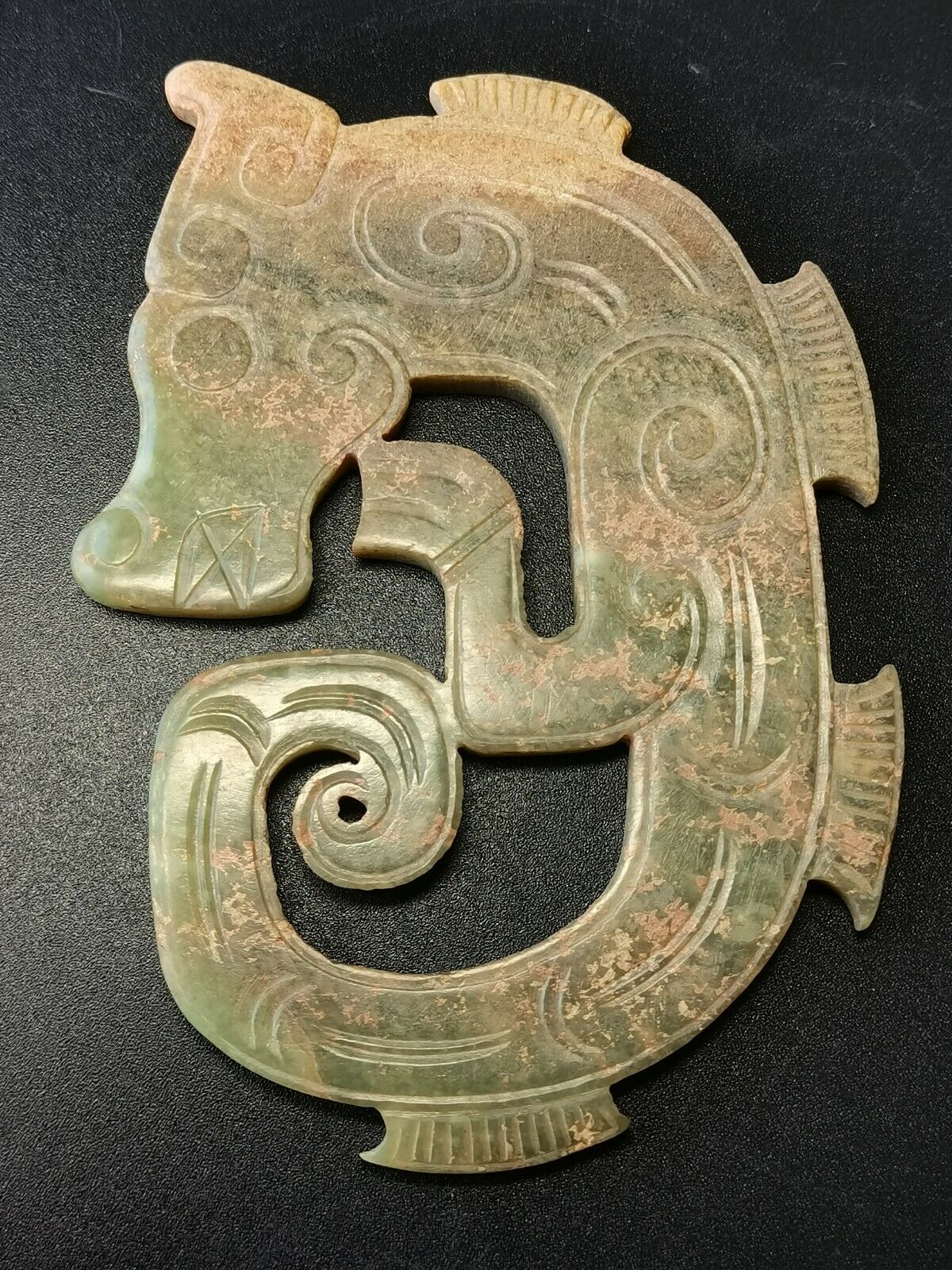-40%
Rare XLG Chinese Liangzhu Jade 17“ Lightning Bolt & Sacred Ancestor & Taotie # 5
$ 9028.79
- Description
- Size Guide
Description
ANCIENT CIVILIZATIONSArtifacts, Antiques, & Fine Collect
i
bles
Ancient
Chinese Jade 17” Sacred Amulet # 5
XLG Jade “Lightning Bolt” or “
Z
huixingqi
”
Pictographs of "Sacred Ancestor” & Sacred Animal (
Taotie
)
English Translation Provided of Pictographs
Middle Liangzhu
Culture
(
良渚文化
)
c. 3000 BC—2600 BC
NOTE:
William D. Houghton, the President of ANCIENT CIVILIZATIONS
, a State of Washington Licensed Business,
assumes all responsibility for the information contained in this description and for the English translation and transcription of the ancient Chinese graphic characters.
Furthermore, I prohibit the further dissemination of this information in any written, video, or electronic format without my expressed, written approval.
Thank You!
SUMMARY
Item:
Chinese Jade “
Zhuixingqi”
Amulet:
Lightning Bolt motif. Sacred Human/Ancestor & Sacred Animal (
Taotie
) Amulet # 5
Material:
Nephrite Jade, highly polished
Culture:
Chinese
Liangzhu Culture
(Chinese:
良渚文化
)
Est. Date:
3400 BC—2250 BC
Approximate Measurements:
•
Height:
17” (43cm)
•
Sides:
1.49” (38mm) and 1.39” (35mm)
•
Weight:
2.40 lbs. (1096gr)
Condition:
Very Good museum quality condition with no visible repairs or restorations. Some portion of the thick, white calcium and mineral deposits has been professionally removed by previous owner in China.
This conservation allows us to see the original color of the lovely nephrite jade as it looked some 4,000 years ago.
Provenance/History:
This jade amulet was obtained from an old private collection in Nanyang, Henan Province, China.
This XLG amulet that is 17” long is the largest of the five jade Lightning Bolts I purchased from the same dealer in China—each slightly different in length and each listed separately on eBay. This is the first time they have been offered for sale in the United States.
This museum quality item is Extremely RARE at 17” and is Guaranteed authentic and original!
This item is legal to buy/sell under U.S. Statute covering cultural patrimony Code 2600, CHAPTER 14, and is guaranteed to be as described or your money back.
This item will come with a Certificate of Authenticity (COA) from ANCIENT CIVILIZATIONS.
DETAILS
This is a wonderful, museum quality jade amulet called a
zhuixingqi
in China is carved in “Lightning Bolt” design or like an Egyptian, obelisk-formed shape, which is considered as the amulet to prevent owner against Evil Spirits and bring good luck to its owner.
The amulet shows the distinctive and authentic patina of ancient weathering and
light-
mineralization that has formed on the surface of the jade from the iron and other elements/minerals like calcium in the damp soil where it was buried for over 5,000 years.
Sets of
zhuixingqi
awl-shaped objects are considered to be specifically related to male identity in Liangzhu society. Multiple pendants in odd numbers are normally found near the heads of the deceased in Liangzhu elite and non-elite burials. The number of
zhuixingqi
awl-shaped objects we have from Liangzhu range from 3 to 11 only in odd numbers in male burials. It would seem that these
zhuixingqi
awl-shaped objects were not exclusive to high-status members, as they are also present in ordinary graves, suggesting that the jade resource was available to ‘ordinary’ people. On the bottom of each
zhuixingqi
awl-shaped object were tenons and drilled holes, indicating that they were originally attached to some sort of organic material with the pointed head upwards.
The set of
zhuixingqi
awl-shaped objects reflects both the power and belief in Liangzhu society. On the one hand, appearance or absence of carved motifs and the number of
zhuixingqi
awl-shaped objects in one set clearly indicate different social ranks; on the other hand, they were only found in fixed positions, using certain methods and in male graves, which shows that they must have played some specific roles during funerary rituals. For example, in M20 tomb of a high-status individual, archaeologists have found a set of nine, with eight identical pieces of plain
zhuixingqi
awl-shaped objects and only one longest carved with patterns. Thus, as a whole, they showed the special elite status of the occupant.
The slender amulet has a single, “uniform bore hole” drilled in the shouldered, tenon joint and then set inside and mated to a mortise joint that presumably would have been used to support the amulet on a wooden pole, with the pointed end displayed at the top.
The inside walls of the hole have an authentic patina of calcium and micro-crystalline jade that further authentic this amulet as authentic.
(See photo # 7.)
Archaeologists have excavated these artifacts from Liangzhu tombs in groups of between three and nine pieces.
They have been found in the upper area of the skull and vary in length between 13/8” and 7 7/8” (3 and 20 cm).
This example is an especially long amulet at just over 17” or 43cm and must have been made for an elite-status male's tomb.
The top head that has been beautifully carved into each of two levels, on two sides of the four-sided amulet represents a “Sacred Man” or “Sacred Ancestor” who eternally lives in Heaven (
Tian
).
On two edges between two of the Ancestors heads, we see the detailed work of the Liangzhu Culture stonemason that has incised the distinctive scroll work design of the two eyes and mouth of the Sacred Man.
(S
ee macro photos # 2, 4, & 6.)
Just below the heads of the “Sacred Ancestor” are what the Chinese call a “Sacred Animal.”
It is often referred to as the mythical monster
Taotie
.
Both creatures can protect their descendants from Evil Spirits who were thought to lurk everywhere of Earth and that were able to prevent the souls of the departed from reaching Heaven.
Above the Taotie, is the smaller figure—the
“Sacred Ancestor” or “Sacred Man” in Chinese.
He is shown riding the Taotie to safety and immortality in Heaven.
(S
ee macro photos # 2, 4, & 6.)
The Taotie is prominently featured on the center, front of the amulet
(see macro photos # 2, 4, & 6.
), with his nose in the center, two large circular eyes, and a rectangle shaped mouth that is ready to devour any Evil Spirits that might prevent the soul of this man from reaching his ancestors in Heaven.
His oversized round eyes and horizontal mouth have been incised into the hard jade with the finest of cut lines and are utterly amazing.
Some experts suggest that a shard of hard flint or even an iron meteorite awl was used by the Neolithic stone masons to make these ultra-thin cut lines, as Neolithic cultures did not have iron tools to incise the extremely hard jade
China’s Ancient Liangzhu Culture
{Courtesy of Wikipedia
}
The jade from the Liangzhu (Chinese for "Ancient City") Culture is characterized by finely worked large ritual jades like this Lightning Bolt Amulet that were commonly incised with the "Sacred Ancestor and the “Sacred Animal” often called a
Taotie
motif—thought to be a ferocious monster capable of destroying Evil Spirits.
This has one such creature beautifully incised on the front of this stunning amulet.
The workmanship and carving style on this jade amulet are fine and elegant, and carry the genre of China’s ancient Liangzhu Culture.
The Liangzhu culture (Chinese:
良渚文化
; pinyin:
liángzhǔ wénhuà
) (3400-2250 BC) was the last Neolithic jade culture in the Yangtze River Delta of China.
Its area of influence extended from around Lake Tai, north to Nanjing and the Chang Jiang, east to Shanghai and the sea, and south to Hangzhou. The culture was highly stratified, as jade, silk, and lacquer artifacts were found exclusively in elite burials, while pottery was more commonly found in the burial plots of poorer individuals.
The type site at Liangzhu was discovered in Yuhang County, Zhejiang and initially excavated by Shi Xingeng in 1936.
The culture possessed advanced agriculture, included irrigation, paddy rice cultivation and aquaculture. Houses were often constructed with stilts on rivers or shorelines.
The jade from this culture is characterized by finely worked large, ritual jades, commonly incised with the
Taotie
motif like on this extraordinary example that is 17" long. The most exemplary artifacts from the culture were its “
cong
,” which were square pieces of jade that had a round hole carved in its center.
These cong appear to have represented heaven and earth.
The largest
cong
discovered weighed 3.5 kg.
Bi
(discs) and
Yue
axes (ceremonial axes) were also found. Jade pendants were also found, designed with engraved representations of dragons, small birds, turtles, and fish.
RESOURCES
·
Jade
, Consolidating Editor, Roger Keverne, pg. 71—76.
·
The Ancestral Landscape
, David N. Knightley, 2000
·
Chinese Characters,
Dr. L. Wieger, S.J.
·
The Great Bronze Age of China
:
An Exhibition from the People’s Republic of China
, edited by Wen Fong, 1980
·
Metropolitan Museum of Art, NYC
·
Ancient Chinese Warfare
, Ralph D. Sawyer, Mei-chün Sawyer
·
Archaeology
, Archaeological Institute of America, Feb/March 2015
·
Shanghai Museum, China
·
Museum of Chinese History, Beijing, China
·
National Palace Museum, Taipei, Taiwan
·
British Museum
·
Smithsonian Museum, Sackler & Freer Gallery, WDC
Please examine the macro photos carefully as they are part of the description.
The stand and ruler are not part of the auction, just included to give you a better perspective.
And please ask any questions before you buy.
International Buyers are responsible for all import duties, import taxes, shipping charges and insurance costs.
International Returns are
NOT
accepted.
Note:
Please ask any questions you may have before you bid! Thanks for Looking!
